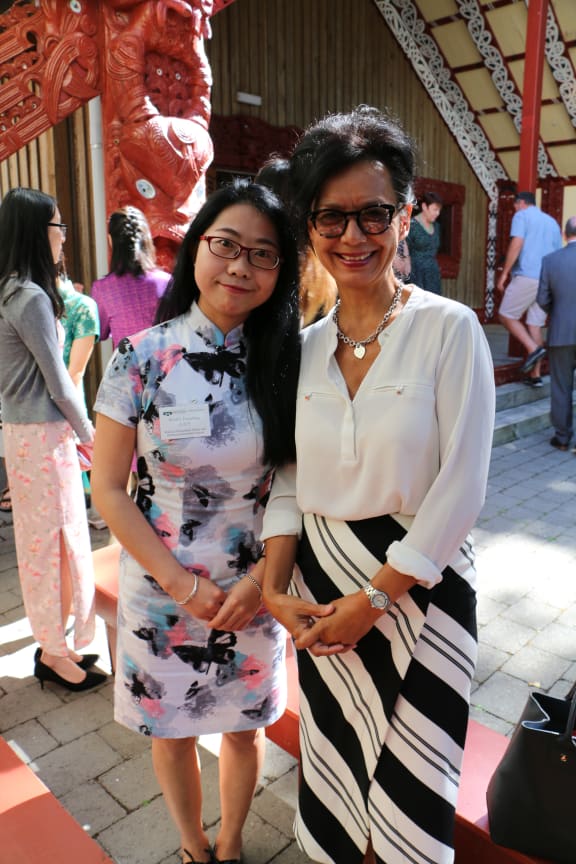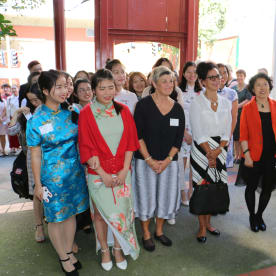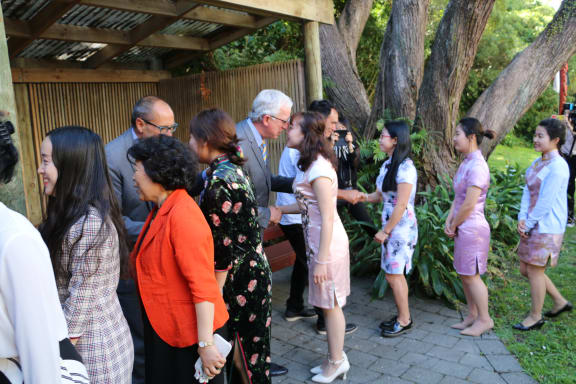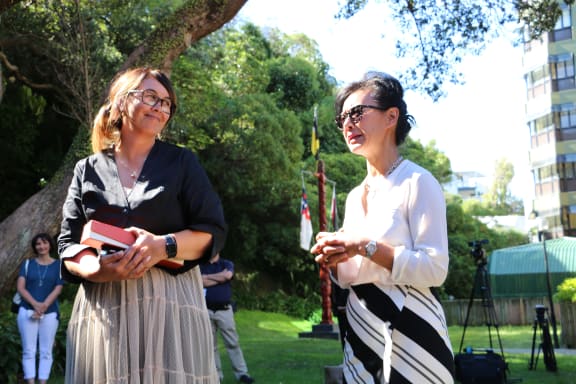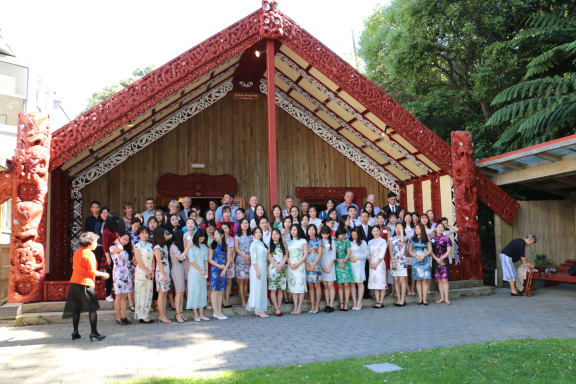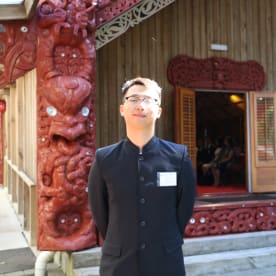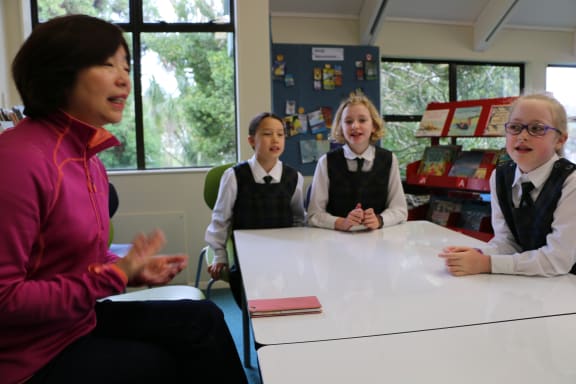Why do we need a second language in our lives? New Zealand is still lagging behind on the international stage, as far as second language learning in school goes. That could be about to change.
Subscribe to Voices for free on Apple Podcasts, Spotify, Stitcher and Radio Public or wherever you listen to your podcasts.
A group of 150 Chinese visitors are singing a well-loved waiata at Victoria University’s Te Herenga Waka Marae. Considering they’ve been in the country less than a week, they’re performing well enough to make any Kaumātua proud.
They are all volunteer Mandarin Language Assistants (MLAs), graduates of universities from across China brought here by the Confucius Institute
“They’re placed in schools to support the teaching of Chinese language.” Says Rebecca Needham, the institute’s director. “Most of them major in teaching Chinese as a second language.”
Placed in 440 schools nationwide, “they enable many schools around the country to teach Chinese.”
She says learning a second language is crucial for a child’s development, for two reasons.
“One is cognitive benefits; it’s been proven clinically that learning a second language [is] good for cognitive development.
“Then there’s the more practical reason. It’s a skill that will equip you in the future, not just for jobs, but for travel, meeting people and being exposed to different cultures.”
According to the Ministry of Education, Mandarin is the most popular second language by far, taught to around 54,000 primary and intermediate students (from Year 1 to 8). This is followed by French with almost 27,500 and Spanish with over 22,000 learners.
“Ten Years ago there were less than 5,000 primary school children across New Zealand enrolled in Chinese language. That’s a tenfold increase.” Says Rebecca, “A significant driver of those numbers, particularly at primary and intermediate level have been those MLAs.”
They teach the teachers as well as the pupils, helping grow capacity.
Although Mandarin remains a popular second language choice at secondary school level, the numbers are lower, something that Rebecca attributes to the increased demands on the students’ curriculum.
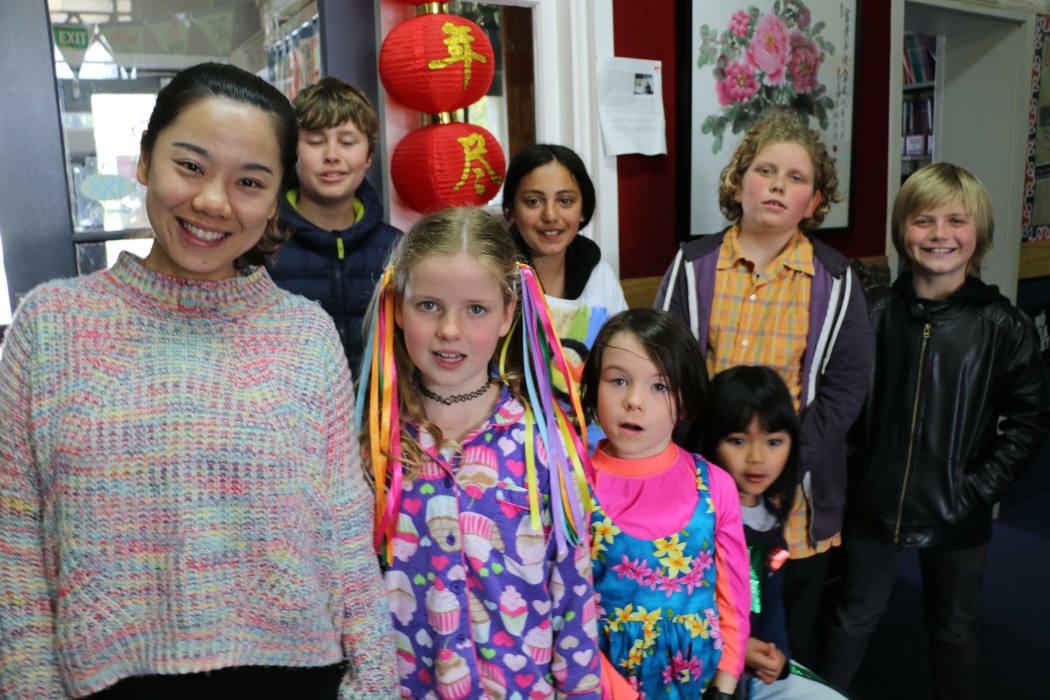
Te Aro Primary students with MLA Chinese teacher Jingwen Zhang. Photo: RNZ Lynda Chanwai-Earle
Up the road from the marae at The Beehive, National’s former Education Minister Nikki Kaye has good reason to be watching the clock while I interview her.
The arrival of the MLAs coincides with Ms Kaye’s release of her private members bill and petition, to give every primary and secondary school child the opportunity to learn a second language, was about to go into the ballot at Parliament. Her bill was a part of National’s election campaign last year.
“My Members Bill is about ensuring that all children in years 1-8 have universal access and resources to learn a second language,” Ms Kaye says. “It actually does require us to have a national language policy. We have to focus on what language provision is available in the community [and] what language resources are available.”
However Ms Kaye insists that te reo Māori and New Zealand Sign language (NZSL) should be mandatory. Te Mātāwai – a new organisation established under the 2016 Māori Language Act, during the previous National government – was designed to revitalise te reo Māori on behalf of iwi and Māori. “When you think of Te Reo [it’s about] recognising who we are as a nation.”
How though would Ms Kaye’s bill be resourced? The former National government had proposed $40M per year (over four years) to fund second languages in schools, starting at the age of five. But that’s complicated by the debate around the 10 priority languages suggested.
“When you go out and consult on the national language policy, you look at the work force development strategy,” says Ms Kaye. “There will be a different strategy within different languages – because there will be different levels of leadership and opportunities to access resources.”
Further up the country, in the Bay of Plenty, a trip-of-a-life-time is being planned for the students of Tarawera High School in Kawerau. They’re going to China.
Rebecca says these students have been studying Mandarin for the last two years with the help of the visiting MLAs. To help negotiate the journey, the Confucius Institute will send one of their top language assistants.
From the Jiangxi Province in South East China, MLA Chen Yu is armed with an English Major as well as a PHD in Chinese International Education. “I like to have communication with different people from different cultures,” says Chen Yu, “I think it’s quite cool and a great thing to do that.”
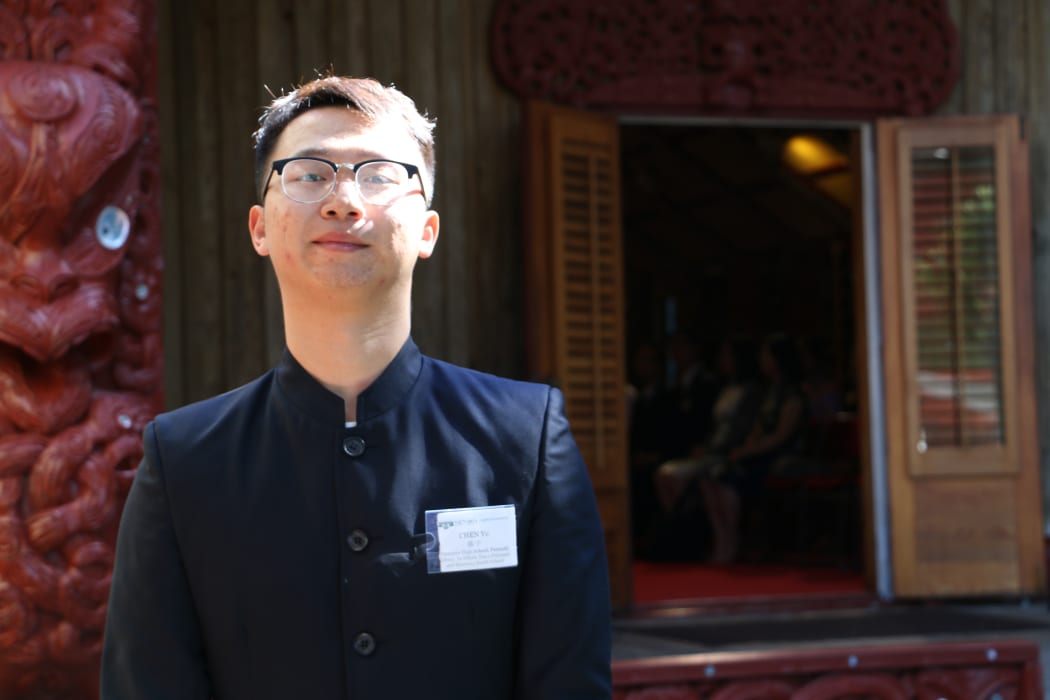
MLA Chen Yu looking forward to assisting at Tarawera High School. Photo: RNZ Lynda Chanwai-Earle
And meanwhile back at Parliament, the results of the ballot? Ms Kaye’s bill wasn’t pulled this time but she is ever hopeful that second languages will be institutionalised in schools.
“There are multiple benefits from a cultural perspective, from a cognitive perspective.” Says Ms Kaye, “There’s a real human side to improving language.”
